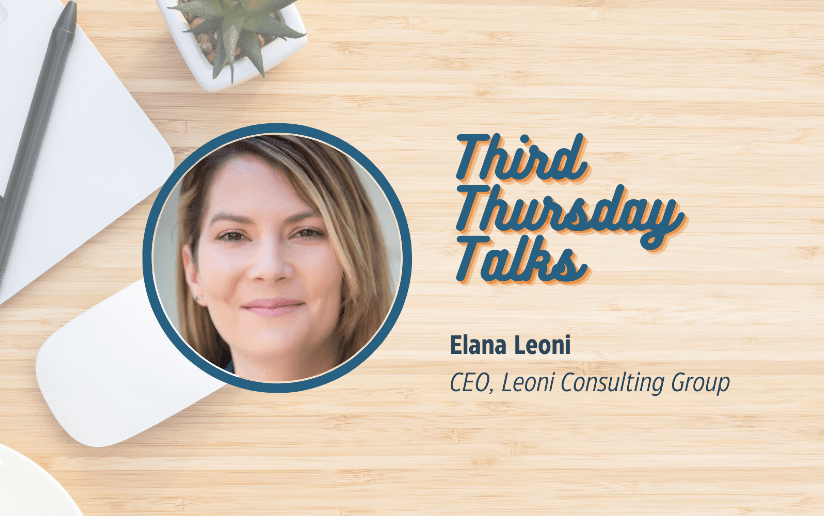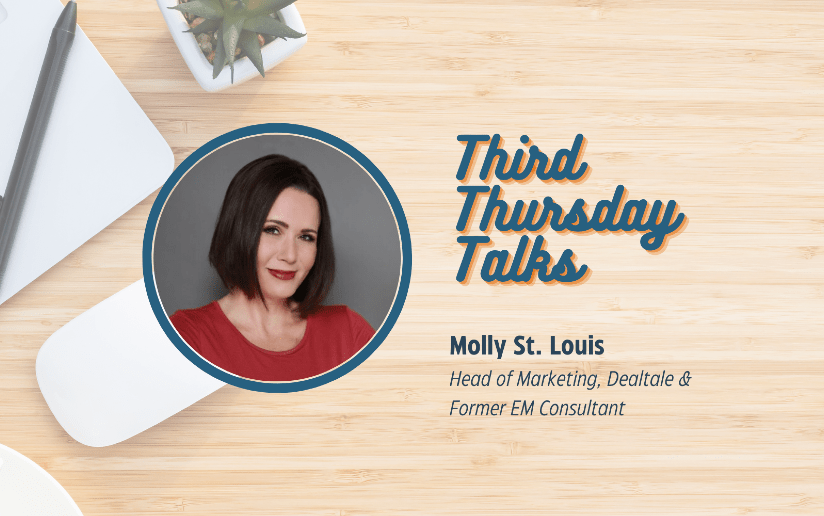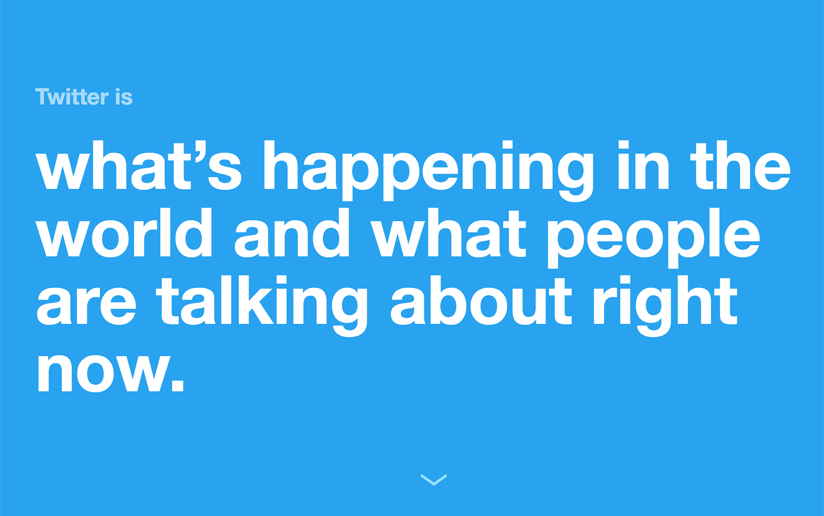
The Curator’s Guide to Shareable B2B Content
In my work as a B2B social media strategist, I have spent a good portion of every work day for the last decade curating content for the social media feeds of clients in a wide range of industries. I consider content curation indispensable for B2B social media success. I see a lot of companies whose social feeds are devoted entirely to news about their own company and its products. Such a feed can be a valuable resource for anyone researching the company, but it’s not really social.
Your audience has broader interests than just your company. To humanize your feed and make it more interesting and engaging; to be part of the ongoing conversation in your industry, and to make friends and influence people, you need to curate and share other people’s content.
Third party content helps your audience understand the market context around your product or service. It provides independent validation of what the audience is experiencing. Ideally it should enhance your company’s reputation and credibility in the industry and create trust. This is especially important for B2B companies, where the price tag is big, there will be a lot of people involved in making the decision, some of them executives, and the relationship will be long term.
Even with the amount that has been invested in content creation over the past ten years, the ever-growing amount of content that’s out there, shareable content is still hard to find. I have Google Alerts, Feedly, Twitter lists and a team of humans out there scouring the internet for it. For every five articles that look relevant, after reading we probably only end up sharing one, for reasons that are well within the power of most content creators to correct.
Here is this content curator’s guide to creating highly shareable B2B content:
Grammatically correct.
It’s very sad to find an article with new information or a unique point of view that is riddled with grammatical errors. That’s not shareable because it reflects poorly on the sharer — not to mention the publisher.
In a professional publishing organization, there are many layers of fact checkers and copy editors. My first job out of college was as a production copy editor at The Wall Street Journal. By the time the copy made it to my group on the West Coast, it had already been read and edited by at least half a dozen people. Someone from my group then read the story on galley proofs (I date myself) and then another person read through it again in the printed newspaper as it came off the press. And we still found errors that we had to correct on the next print run.
Most businesses can’t afford that level of editorial vetting. But if you’re trying to reach a B2B buying audience, you need to have some kind of people and process in place to ensure an acceptable level of quality.
Publisher transparency.
Every industry has its go to publications that are well known and respected. I share their content often because they are known and trusted and their brand equity accrues to my client.
Sometimes I come across a really interesting article on a site I’ve never heard of. To protect my client’s reputation, I look around their website and their Twitter and LinkedIn profiles to see who they are and what they’re about. Have they been around for a while? What else are they writing and talking about? Do they have a clear and consistent editorial mission? Is it apparent that they are experts in their field? Would the people in our audience who are knowledgeable about the field find it credible?
There are a lot of spammy, clickbait sites out there, and B2B is littered with vanity publishers — sites where a company can pay to publish bylines, usually by company executives. Don’t publish on these sites. Even if your article is good, it’s not shareable because the site is not reputable. If you’re turning out good content, hire a PR firm to pitch and place it on reputable sites.
Transparency of authorship.
Who is the person writing, and what qualifies them to speak on the topic? A byline addresses the former, and an author bio, usually appearing at the end of the piece, addresses the latter.
Too often this information is missing. That’s a loss for me and for whoever created the content. First of all, if I like what I’m reading, I need a byline so I can find the author on social media and give them a shout out. But before I can do that, I need to know who you are. Are you selling something? Are you affiliated with a reputable organization? Are you a paid influencer? How long have you been in the industry and what is your experience? Can the audience trust what you’re saying? Are you someone my client should be associating with? Make sure you let the audience know.
Attribution.
If statements of fact are made, or you cite statistics, survey results, etc., provide attribution, either in the body of the article or via hyperlink. Who are your sources, and are they reputable? Is the source open and transparent about where they got their data and how they arrived at their conclusions? Are the sources current?
Include a dateline.
Whether by oversight or intention, many articles do not have a dateline. I think a lot of content creators are of a mind that leaving out the dateline will prolong the shelf life of the article, but it can actually make me feel less confident to share.
I certainly don’t want any of my clients to become known for sharing outdated information with their audience. A better strategy for readers, search engines and content creators is to go back and update your content and republish it, stating that the original article was updated on such and such a date. You can get the article re-indexed, show your audience that you’re keeping current, and get a little break from having to create something new that week.
Provide a title tag and meta description.
Make sure to populate the title tag of your post with the headline of your article, and fill in the metadescription. These elements appear in various ways on different channels and depending what automation tools you use. If you don’t provide them, it can make it pretty hard to share your post.
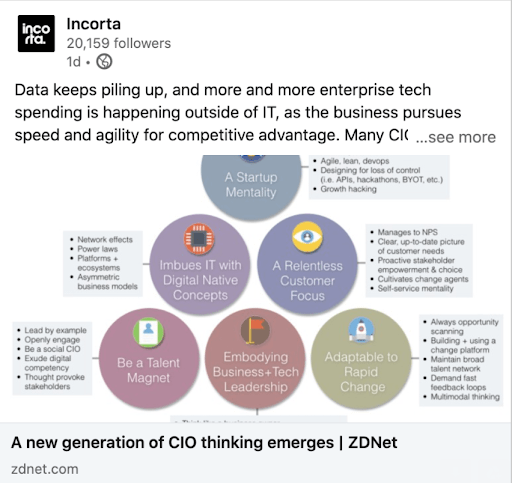 LinkedIn post with title tag
LinkedIn post with title tag
The title tag in the above post includes the headline, “A new generation . . . etc.” and the source, in this case ZDNet, a well-known tech publication. The short, compelling headline in combination with the name of the publication, adds interest and credibility to the post.
The meta description gives a brief indication of what the article is about, and appears in various places online and on social media.
 Twitter curated content post including meta description
Twitter curated content post including meta description
If you do not provide a title tag or metadescription, some platforms will allow the sharer to add one, or the platform itself will pick something out.
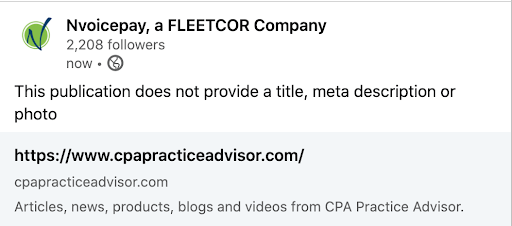 LinkedIn post with autogenerated metadata
LinkedIn post with autogenerated metadata
Taking the time to provide these elements helps the content curator share quickly and easily. It helps your SEO effort, and it’s valuable marketing real estate, and as such, you want to populate it with a strong message.
Include an image.
Virtually all industry data indicates that posts with an image outperform posts without by a wide margin. However, as with the above example from CPA Practice Advisor, some publishers still don’t provide an image to go with the post. Or, their image is the wrong size or aspect ratio and it presents poorly.
 LinkedIn post with incorrectly sized image
LinkedIn post with incorrectly sized image
As you can see, even big companies such as SAP Concur make this kind of basic mistake.
It is possible for content curators to screenshot an image, or find a stock image to use. Don’t make them do that extra work. They may just move on to content that’s social ready.
Provide thumbnails and captions for video.
Videos need a thumbnail that gives them a nice visual appearance. These should be included as a static shot for the first three seconds of the video, because social platforms handle separate thumbnails differently and it keeps changing. For example, LinkedIn used to let you upload a separate thumbnail image, but no more.
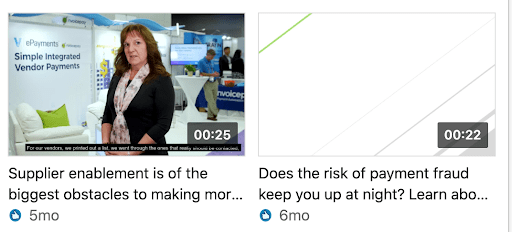 LinkedIn video library with missing thumbnail
LinkedIn video library with missing thumbnail
Including the thumbnail in the video itself protects you against changes and variability from platform to platform. Captions should be included so that people can consume the content with the sound off, as this is often the default setting.
Curb the urge to sell.
I’ve passed on a lot of otherwise good content that closes with a sales pitch, because posting it would be tantamount to an endorsement.
There may be times when an endorsement is appropriate — maybe a partner is sponsoring a webinar, or you’ve launched an integration together for example. Most of the time though, I skip over these assets because my client is not in the business of promoting other people’s business.
In the time since I began doing social media, I’ve noticed that not only has the amount of content increased, the editorial quality has as well. Companies are hiring professional writers and videographers and even editorial directors. But there are still publishers who don’t think past publication on their own site. I know, because when I take on a new client, I usually have to work with them to make the blogs and whitepapers and videos they’re creating socially shareable.
I get asked again and again, “What can we do to get more people to share our content?”
I would argue that it’s a relatively small incremental investment to pay attention to these details, and that B2B publishers would be better served by shifting some of their investment in quantity over to improving quality.
My core criteria for curating content is whether it is interesting and relevant for the desired audience. If it is, I move on to the list of criteria above. And when I find a publisher that’s firing on all cylinders, I’ll return and consume their content and share it again and again, and others will too.


